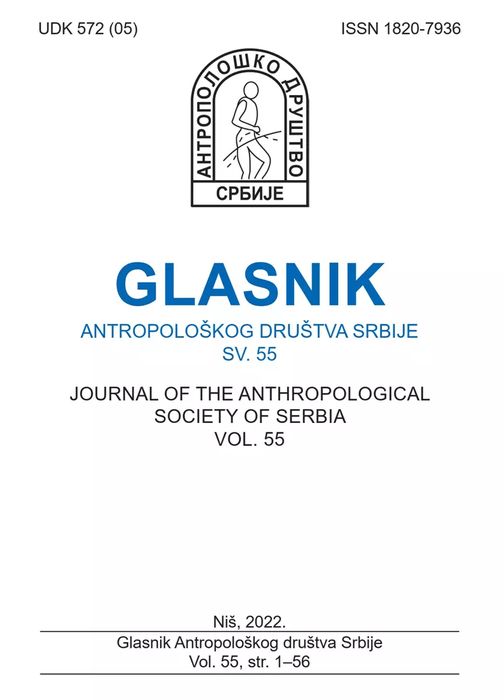Temporal changes of cephaloscopic traits in school age boys and girls from central Greece
Temporal changes of cephaloscopic traits in school age boys and girls from central Greece
Author(s): Magdalena Pirinska-ApostoluSubject(s): Anthropology
Published by: Антрополошко друштво Србије
Keywords: anthropology; cephaloscopic traits; human ecology; schoolchildren
Summary/Abstract: Conducting cephaloscopic studies in order to obtain the characteristics of ethnic groups inhabiting a particular geographical region not only helps to understand the frequency of distribution of human morphological traits, but also provides a basis for comparison between different populations. A sample of 2683 individuals of school age (12 to 17 years) of both sexes, divided into smaller groups according to age, sex and origin was analyzed in terms of 7 cephaloscopic traits. This contingent originates from the districts of Thessaly and EpirusCentral Greece, which represent about 10.1% of the population of Greece. During the study, standard anthropological equipment of Siber Hegner Maschinen AG - Zurich was used, according to the classical methodology of Martin & Saller (1957). A cluster analysis revealed two main branches, dividing the compared groups by the chronology of the studies, as well as smaller branches, according to their sex. These results suggest a significant change in the frequencies of occurrence over time, with the territorial factor prevailing over gender in the present study. Available data obtained during the 1980s prove the opposite. A comparison of the percentages of occurrence of some scopic traits in boys and girls from Thessaly and Epirus according to bibliographic and current data demonstrates declining temporal deviation: differences between genders were higher 20 years before the present study.
Journal: Glasnik Antropološkog društva Srbije
- Issue Year: 55/2022
- Issue No: 1
- Page Range: 43-48
- Page Count: 6
- Language: English

